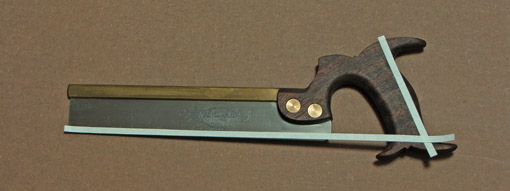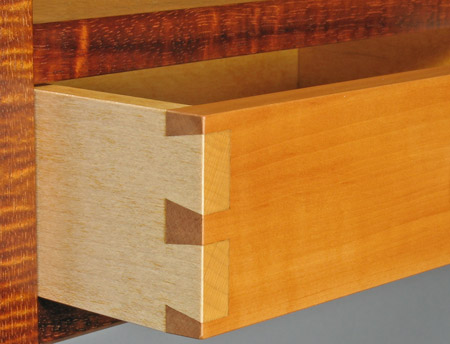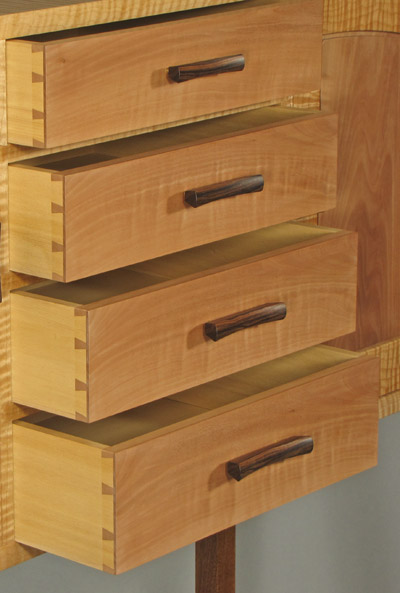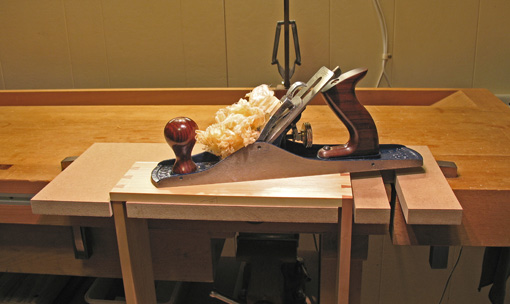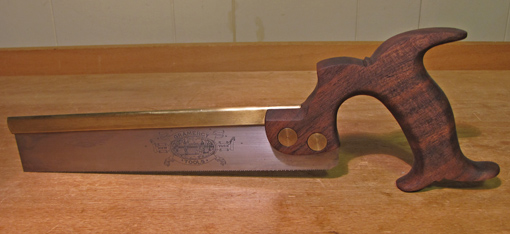
The saw pictured in the previous post, and above, is the Gramercy dovetail saw but that is not the original handle.
In this blog, I have praised the Gramercy saw, and I still think it’s a great saw. However, the original handle is set rather high – a high hang angle – and I have come to dislike that feature. I understand and respect Joel Moskowitz’ reasons for designing it that way but, partly because I’ve reworked some of my sawing mechanics, I now find it just does not best suit me. I’m using a lower stance with my shoulder and elbow more downward.
So, I made a handle from some spare Claro walnut. (In the process, I increased my appreciation of the skill level exhibited by professional tool makers. I needed some shimming to get the fit right.) In the photo below, the Gramercy handle is placed in its original position, a hang angle of 35°, for comparison with the 66° of the replacement handle. This is a large difference which, to me, makes the replacement feel significantly better in use. I also like the beefier grip of the replacement better than the skinnier original.
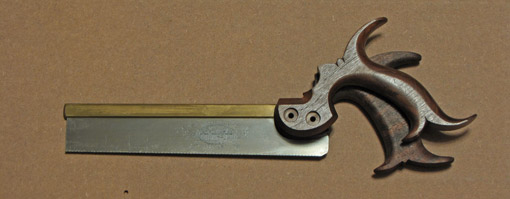
Mark Harrell of Bad Axe Tool Works deserves most of the thanks for my evolution. I have been using his dovetail saw this year and it has become my favorite. The hang angle of the Bad Axe is about 61° and the tote feels just right in my hand. I outlined its basic shape and adapted the front to fit the Gramercy. As Mark explains, the hang angle of his saw “gets you behind the push stroke.” [To be clear, converting the Gramercy saw was not done at the suggestion of, in consultation with, or to the knowledge of Mark. Reading Mark’s ideas and using his saw were informative, but the responsibility for the conversion is mine alone.]
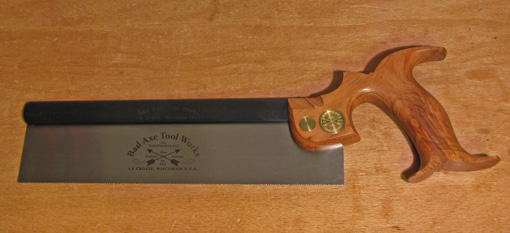
In a future post, I will discuss the Bad Axe saw more, but the summary for now is that it’s wonderful. Mark’s passion for excellence has raised the game for saw making.
Here are a few more thoughts on saw hang angles:
The Disston D-7, pictured below, has an angle of 74° which puts the power more behind the saw, which is needed for heavy ripping with an aggressive tooth rake.
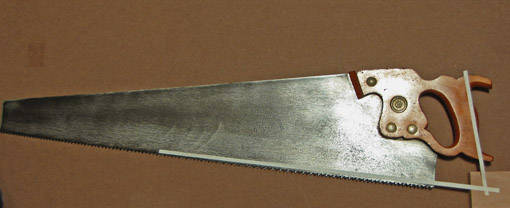
Tilting the wrist can compensate for an undesirable saw hang, but, as any tennis player knows, the wrist is most firm in its unbent position.
Finally, what is the hang angle of the saw below? Defying just about everything discussed here, the Japanese pull stroke saws demonstrate that there is more than one good way to do things.


